Today Current Affairs: 20th May 2022 for UPSC IAS exams, State PSC exams, SSC CGL, State SSC, RRB, Railways, Banking Exam & IBPS, etc
Table of Contents
Finland And Sweden Submitted A Joint Application To Join NATO:

Finland and Sweden submitted a joint application to join NATO as Russia’s invasion of Ukraine forces a dramatic reappraisal of security in Europe.
- The North Atlantic Treaty Organization (NATO) is an intergovernmental military alliance between 30 member states – 28 European states, the United States, and Canada.
- The organization, headquartered in Brussels, implements the North Atlantic Treaty, which was signed on 4 April 1949.
- The reversal of the Nordic countries’ long-standing policy of non-alignment came amidst the Ukraine-Russia conflict.
- The membership push could represent the most significant expansion of NATO in decades, doubling its border with Russia.
- But the applications face resistance from NATO member Turkey, which accuses the Nordic neighbours of harbouring anti-Turkish extremists.
What Are RFID Tags?

RFID tags will now be used to track Amarnath pilgrims.
- The decision was taken amid heightened security threats to the pilgrimage.
- Radio Frequency Identification is a wireless tracking system that consists of tags and readers.
- Radio waves are used to communicate information/identity of objects or people.
- The tags can carry encrypted information, serial numbers and short descriptions.
- Types – passive and active RFID tags:
- Active RFIDs use their own power source, mostly batteries.
- Passive RFIDs are activated through the reader using the electromagnetic energy it transmits.
- RFID tags use an integrated circuit and an antenna to communicate with a reader using radio waves at several different frequencies – low frequency (LF), high frequency (HF), and ultra-high frequency (UHF).
- The message sent back by the tag in form or radio waves is translated into data and analysed by the host computer system.
- Unlike Barcodes, RFIDs do not require direct line of sight to identify objects.
Increase Of Percentage Of Ethanol In petrol To 20%:
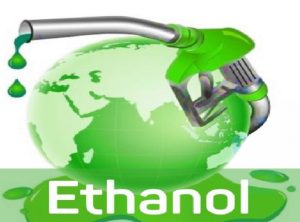
The Union Cabinet approved amendments to the National Policy on Biofuels, 2018, to advance the date by which fuel companies have to increase the percentage of ethanol in petrol to 20%.
- The policy to introduce 20% ethanol in petrol will take effect from April 1, 2023.
- India achieved 9.45% ethanol blending as on March 13, 2022. The Centre projects that this will reach 10% by the end of financial year 2022.
- Immense Benefits could accrue to the country by 20% ethanol blending by 2025, such as saving ₹30,000 crore of foreign exchange per year, increased energy security, lowered carbon emissions, better air quality, self-reliance, better use of damaged foodgrains, increased farmers’ incomes and investment opportunities.
- The new policy would allow more feed stock for producing biofuel and foster the development of indigenous technologies.
- A 20% blend could require some changes and may even drive up the prices of vehicles.
- A greater percentage of blending could also mean more land being diverted for water-intensive crops such as sugar cane, which the government currently subsidises.
Gifted Child Category : Qualifying Criteria By AICTE
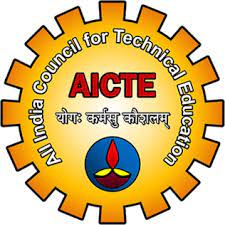
Last month, the All India Council for Technical Education (AICTE) stated that it will allow institutions to set aside two more seats under the “gifted child” category.
The criteria:
- A prizewinner of at least one national/international level competition organised by a government or a recognised private body.
- Has received funding from a government agency for pursuing innovative projects.
- Is a candidate having high-quality original research article publications in peer-reviewed journals as the first author.
- Is the primary holder of a patent granted by an Indian or international patent office.
- Is the owner of an app on Google/Apple/Windows stores or has launched or is in process of launching a technology based innovative product in the market (with more than 10,000 downloads).
Benefits for students under this category:
- Institutions admitting students under this scheme are committed to give a complete tuition waiver to the admitted students.
Sudden Infant Death Syndrome:
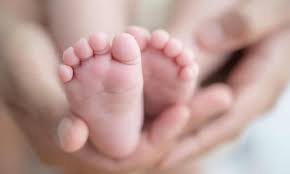
A team of researchers in Australia has identified a biochemical marker in the blood that could help identify newborn babies at risk for the Sudden Infant Death Syndrome (SIDS).
- The researchers used dried blood spots from newborn infants and screened the samples for BChE (Butyrylcholinesterase) level and total protein content.
- Sudden infant death syndrome is the unexpected death of an apparently healthy infant.
- It usually occurs while the baby is asleep, although in rare cases, it can also occur while the child is awake.
- The condition is also called “Cot Death”.
- Newborn babies delivered prematurely or with low weight at birth are believed to be at a greater risk of SIDS.
- The exact cause of SIDS is unknown, although revelations from the new research look promising.
- Babies who died of SIDS showed lower levels of the BChE enzyme shortly after birth.
- A low level of the BChE enzyme affects a sleeping infant’s ability to wake up or respond to their environment.
- The enzyme is an important part of the autonomic nervous system of the body and controls unconscious and involuntary functions.
- The previously conducted studies have found that low BChE activity is associated with severe systemic inflammation and considerably higher mortality after sepsis and cardiac events.
- Prior to this research on SIDS, inflammation has been thought to be a factor in SIDS cases.
- The mild inflammatory changes on the walls of air passages of the lungs were observed in SIDS infants as early as 1889.
- Prematurely-delivered babies have been considered to be at a higher risk for SIDS, although a 1957 study that evaluated BChE in infancy found that there was no difference in the levels of the enzyme in premature and mature newborn infants.
- Smoking during pregnancy is associated with a significant increase in SIDS events
The State Of Inequality In India Report:
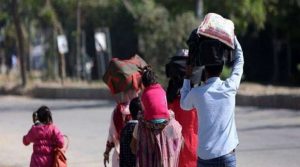
The ‘State of Inequality in India’ Report was released by the Economic Advisory Council to the Prime Minister (EAC-PM).
Highlights of the Report:
- Urban areas have a 44.4% wealth concentration in the highest quintile (20%) compared to a meager 7.1% concentration in rural areas.
- India’s unemployment rate is 4.8% (2019-20), and the worker population ratio is 46.8%.
- In 2019-20, among different employment categories, the highest percentage was self-employed workers (45.78%), followed by regular salaried workers (33.5%) and casual workers (20.71%).
- The share of self-employed workers also happens to be the highest in the lowest income categories.
- In the area of health infrastructure, there has been a considerable improvement in increasing the infrastructural capacity with a targeted focus on rural areas.
- From 1,72,608 total health centres in India in 2005, total health centres in 2020 stand at 1,85,505.
- States and Union Territories like Rajasthan, Gujrat, Maharashtra, Madhya Pradesh, Tamil Nadu and Chandigarh have significantly increased health centres (comprising Sub-Centres, Primary Health Centres, and Community Health Centres) between 2005 and 2020.
- By 2019-20, 95% of schools would have functional toilet facilities on the school premises (95.9% functional boy’s toilets and 96.9% functional girl’s toilets).
- 80.16% of schools have functional electricity connections with States and Union Territories like Goa, Tamil Nadu, Chandigarh, Delhi, Dadra and Nagar Haveli and Daman and Diu, Lakshadweep and Puducherry have achieved universal (100%) coverage of functional electricity connections.
- According to the National Family Health Survey-5 (2019-21), 97% of households have electricity access, 70% have improved access to sanitation, and 96% have access to safe drinking water.
- The Gross Enrolment Ratio has also increased between 2018-19 and 2019-20 at the primary, upper primary, secondary and higher secondary.
- The results of NFHS-4 (2015-16) and NFHS-5 (2019-21) have shown that 58.6% of women received antenatal check-ups in the first trimester in 2015-16, which increased to 70% by 2019-21.
- 78% of women received postnatal care from a doctor or auxiliary nurse within two days of delivery, and 79.1% of children received postnatal care within two days of delivery.
International Museum Day 2022:
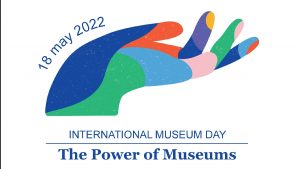
Observed on 18th May every year.
- Theme for 2022: The Power of Museums.
- The Day was instituted in 1977 by the International Council of Museums (ICOM).
- ICOM is a membership association and a non-governmental organisation which establishes professional and ethical standards for museum activities.
- It is the only global organisation in the museum field.
- It was created in 1946 and is headquartered in Paris, France.
- It serves as a network of museum professionals (more than 40,000 members in over 138 countries).
- The ICOM Red Lists of Cultural Objects at Risk are practical tools to curb the illegal traffic of cultural objects.
Multi Agency Centre (MAC):

The Intelligence Bureau (IB) has been granted 138.48 crore by the Ministry of Home Affairs (MHA) for a “technology upgrade” of the Multi Agency Centre (MAC).
- It is a common counter-terrorism grid under the Intelligence Bureau that was made operational in 2001 following the Kargil War.
- As many as 28 organisations, including the Research and Analysis Wing (R&AW), armed forces and State police, are part of the platform.
- Various security agencies share real-time intelligence inputs on the MAC.
Impact Of Increasing Pollution On Human Health : NHRC
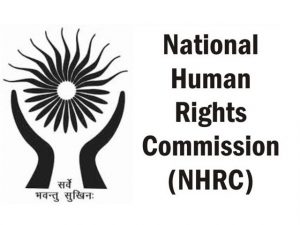
A latest Lancet Commission report on Pollution and Health has highlighted the impact of increasing pollution on human health in India.
- Following this, the National Human Rights Commission (NHRC) has issued an advisory to the Centre and State Governments on preventing, minimising and mitigating the impacts of environmental pollution and degradation on human rights.
Highlights of the Report:
India specific findings:
- Air pollution was responsible for 16.7 lakh deaths in India in 2019, or 17.8% of all deaths in the country that year.
- This is the largest number of air-pollution-related deaths of any country.
- 9.8 lakh were caused by PM2.5 pollution, and another 6.1 lakh by household air pollution.
- Pollution sources associated with extreme poverty (such as indoor air pollution and water pollution): This number has reduced; but, this reduction is offset by increased deaths attributable to industrial pollution (such as ambient air pollution and chemical pollution).
- Worst affected places: Air pollution is most severe in the Indo-Gangetic Plain. This area contains New Delhi and many of the most polluted cities.
- Causes: Burning of biomass in households was the single largest cause of air pollution deaths in India, followed by coal combustion and crop burning.
- Lead: 27.5 crore children are estimated to have blood lead concentrations that exceed 5 µg/dL.
- Economic losses due to modern forms of pollution have increased as a proportion of GDP between 2000 and 2019 in India. It amounts to 1 percent of GDP.
Global findings:
- Globally, air pollution alone contributes to 66.7 lakh deaths.
- Overall, pollution was responsible for an estimated 90 lakh deaths in 2019 (equivalent to one in six deaths worldwide.
- More than 80 crore children are estimated to have blood lead concentrations that exceed 5 µg/dL.
- The factors responsible for this include rising ambient air pollution, rising chemical pollution, ageing populations and increased numbers of people exposed to pollution.
- The global cost of fossil fuel air pollution is estimated to be about US $8 billion per day.
Sela Tunnel project : Arunachal Pradesh

The strategically-significant Sela Tunnel project in Arunachal Pradesh is nearing completion.
- Located in West Kameng district of Arunachal Pradesh, the tunnel project will provide an alternate axis to the Sela pass, which is at 13,700 feet. It will be on the BCT Road – the Balipara, Charduar and Tawang axis, which is more than 300 km long.
- The project, being executed by the Border Roads Organisation, includes two tunnels and a link road.
- While Tunnel 1 will be 980 metres long single-tube, Tunnel 2 will be 1,555 metres with one bi-lane tube for traffic and one escape tube for emergencies running alongside.
- The link road between the two tunnels will be 1,200 metres.
- Tunnel 2 will be one of the longest tunnels to have been constructed above an altitude of over 13,000 feet.
- Upon completion, which is likely by the end of this year, the Sela Tunnel above 13,000-ft will boost all-weather connectivity to the Line of Actual Control with China.
Article 142:
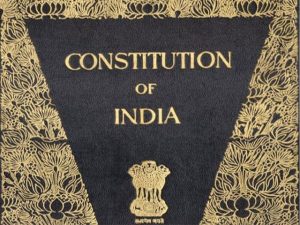
In ordering the release of Rajiv Gandhi assassination case convict A G Perarivalan on May 18, the Supreme Court invoked the extraordinary power conferred on the court under Article 142 of the Constitution.
Article 142 of Constitution:
- Title: Enforcement of decrees, orders of Supreme Court and orders as to discovery, etc.
- This article has 2 provisions –
- 142(1): The Supreme Court may pass an order for doing complete justice.
- 142(2): It confers three different powers on the Supreme Court. They are:
- Securing the attendance of persons before it.
- Discovery and production of documents and
- Investigation and punishment of contempt of itself.
- About A-142(1): Doing Complete Justice
- The objective of Article 142(1) is that the Supreme Court must not be dependent on the executive for the enforcement of its decrees and orders.
- Such dependence would otherwise violate the principles of independence of the judiciary and separation of powers, both of which are part of the basic structure of the Constitution.
- In Supreme Court Bar Association v. Union of India (1998), it was decided that this article
- Cannot be used to over-ride the existing law, but only to supplement the law and
- Can be invoked for procedure purposes only.
World Governance Indicators : World Bank
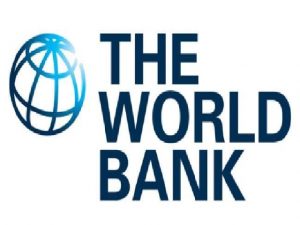
The World Governance Indicators (WGI) has been released by the World Bank.
- WGI play a key role in deciding sovereign credit rating of any country.
- India is losing its sovereign credit rating due to low score in WGI parameters.
- The World Governance Indicators (WGI) are a research dataset that aggregates the opinions of a substantial number of corporate, citizen, and experts survey respondents from both developed and developing nations on the quality of governance.
- World Bank’s World Governance Indicators: It assesses 215 countries and territories based on a certain set of criteria.
- Voice and Accountability
- Political Stability and Absence of Violence
- Government Effectiveness
- Regulatory Quality
- Rule of Law
- Control of Corruption
- India’s WGI score is much below the BBB Median on all six indicators.
- While BBB is an investment-grade rating issued by global rating agencies such as S&P and Fitch.
- A WGI score below BBB Median would suggest that India falls below the middle when the scores of countries are arranged in a descending order.




